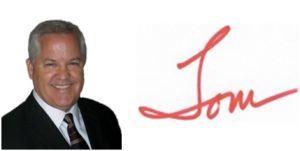In a high tech world, we are sometimes tempted to quantify, define and plan with a hopeful certainty about the outcomes. It is common for leaders and teams to specify a view of the future or of the market and create surefire (they hope) means to be successful. It is also common for people to assume that all within an organization are disposed to work together enthusiastically and seamlessly.
Plan A will lead to 30% sales growth this year! Our new product will blunt Competitor X’s market share and result in 10% incremental profit. All we have to do is get everyone on board with the new strategy, shift the execution focus and convince the potential customers and we will win!!
We do similar things in competitive intelligence. We start with a noble goal of understanding what every significant competitor is trying to do. Add to that knowledge of the market forces at play. Then, almost magically we hope, the organization will snap to attention to devise the tactics needed to overcome the competitive gaps (leading to the 30% sales growth, of course). More than that, we will be universally welcomed for our valuable contribution to the organization. Let the praise rain down on our heads.
The only problem is that things are not that simple. Much as turning an ocean liner is a slow process that cannot be abbreviated, establishing an effective competitive intelligence system to deliver significant results is not a fast process. Aside from the knowledge and techniques that are required, there are many human elements that affect progress. Would it be surprising to you that many of your assumed allies and supporters are not rooting for your success?
For instance, competitive intelligence needs the sponsorship of a senior leader in the organization. That leader may or may not recognize such a need. Indeed, perhaps they think that asking for help would be viewed as a sign of weaknesses. Why don’t they already know what their competitors are doing? Is the identification of a competitive gap an indictment of their strategy?
Sometimes the ownership (and presentation) of competitive information is embodied in a person or organization already. If that is true, then an attempt by someone else to furnish competitive intelligence information may be viewed as threatening. Preserving their position easily can take precedence over supporting the common cause of effective competitive intelligence.
Maybe there will be a sense that competitive intelligence has already been tried once and the results were not helpful. (It’s worth noting that almost any overhead function is subject to such criticisms. Going back in time will always uncover a related failure.) Organizations have institutional memories that can be used for many purposes and there will be in-house experts that can use those memories to slow or block most any new move.
And the list can go on. People and their response to change are probably the largest determinants for the success of a new competitive intelligence program. The people within the organization are more important than the tools, computer systems, training, presentation techniques, insightful interviewing and any other element of the competitive intelligence system.
Over the next month I will take you through the major steps in establishing a competitive intelligence system. At each step, I will explain all of the details (which I just said were less important than the people). But (and this is a big “but”) I will focus on the impact on and role of the people in the organization.
Here are the 15 steps.
The Human Side of Competitive Intelligence
- Find The Pain
- Get The Job
- Tease The Vision
- Frame The Foundation
- Setting Some Standards
- Introduce The Brand
- Accumulate The Tools
- Back To The Vision
- Secure The Budget
- Build The Presence
- Expand the Brand
- Go For the Value
- Recruit A Staff
- Go On The Offense
- Evangelize The Mission
Stay tuned.


[…] In his blog Strategically Thinking J.T. Hawes lists out his 15 steps for Competitive Intelligence success. He’s done a very thorough job of outlining what he thinks are the keys to success, and you can see this for yourself at http://blog.jthawes.com/2009/05/08/the-human-side-of-competitive-intelligence/. […]